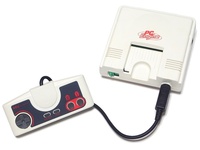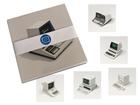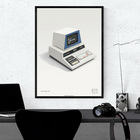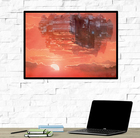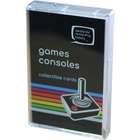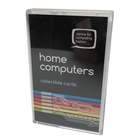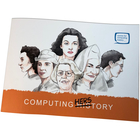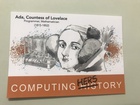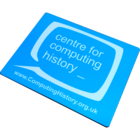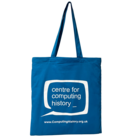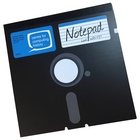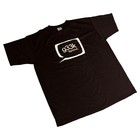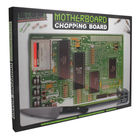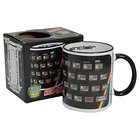NEC PC Engine
| Home > Browse Our Collection > Games Consoles > NEC > NEC PC Engine |
|
The PC Engine is the first games console from NEC, and was a collaboration with the software company Hudsonsoft. They provided the medium called Hu Cards, and were responsible for much of the systems software output. Well known characters such as PC Kid and Bomberman made several appearances on the machine. NEC provided the hardware and it is known for it's tiny size, but powerful performance. It was an 8 bit machine, but with a 16 bit bus and graphics chips. This meant it was a very good platform for shoot 'em up games, as it was able to move around many sprites at once. It was named PC Engine, as this first unit was supposed to be the core of a much expandable system. The only part of this to see the light of day was the CD-ROM, released in 1989, this was to lead to the system producing cinematic games long before the likes of the Mega CD. The CD-ROM unit ran games on special Hu cards called System Cards, and several were produced. Version 1.0 and 2 added more memory, 2.1 removed several software glitches, but the real revelation was version 3.0, or the Super CD card, this not only added more memory, but also allowed more colours, and effects such as scaling and rotation. The arcade card was the last produced in 1994, it increased the memory much further, but also allowed the use of much more impressive sprites, as can be seen in the game Sapphire, looking almost polygon formed. Initially the machine suffered from the crushing competition of Nintendo's Famicom, but it's fortunes changed when Irem converted it's arcade game R-Type to the tiny console with stunning results, it looked and played very close to it's arcade counterpart, this and other quality titles caused an explosion of sales, and the console was the biggest seller of 1988 in Japan. With some excellent software from Hudsonsoft, and impressive third party support from the likes of Sega, Capcom, and Irem who were not developing exclusively for Nintendo, or not at all, the console would eventually find itself with a very commanding share of the Japanese games market, and gave Nintendo a real run for their money, especially when the CD add on was released. The console was brought to America as the Turbografx, the machine could not compete against the might of Nintendo and Sega. The machine also suffered an unwanted transformation into a much larger unit, with an even bigger, more unwieldy looking CD unit. The CD system came in a gigantic box, that also contained a case to cover both systems, the US standalone CD unit is extremely rare today. A planned European launch was largely abandoned, there was a limited launch in France of the original machine with a PAL Modulator. The British company Telegames bought up the stock of the unreleased European console that was identical to the US machine except being grey in colour, and they were available for many years via mail order. For the uninitiated, the wealth of machines can be a bit daunting, but they break down something like this. PC Engine - The original white unit, RF output - 1987
PC Engine Shuttle - 1989 This was intended as a cut cost model, but became a giant of a machine, it is the only console in the entire range that cannot connect to a CD-ROM drive, judging by the box it was aimed at the younger player. Briefcase System - Coming in a smart case with a handle, the regular PC Engine plugged in next to a single speed CD ROM. PC Engine Core Grafx - Dark blue in Colour, and with AV output - 1989 PC Engine Core Grafx II - Light Grey, with orange lettering to match the new Super CD ROM unit, otherwise identical to the Core Grafx - 1990 PC Engine Duo - An all in one unit, with Super CD capability built in, it was jet black in colour. - 1990, now some suffer capacitor problems, has a headphone socket, volume control and the ability to lock the drive door shut. The Super Grafx could also be plugged into the Super CD ROM, without the need for an adaptor, or it could be attached to a Briefcase CD system via the use of an RAU-30 adaptor.
Manufacturer: NEC Magazines RELATED to NEC PC Engine in our Library
Other Systems Related To NEC PC Engine:
This exhibit has a reference ID of CH37158. Please quote this reference ID in any communication with the Centre for Computing History. |
Click on the Image(s) For Detail
|


